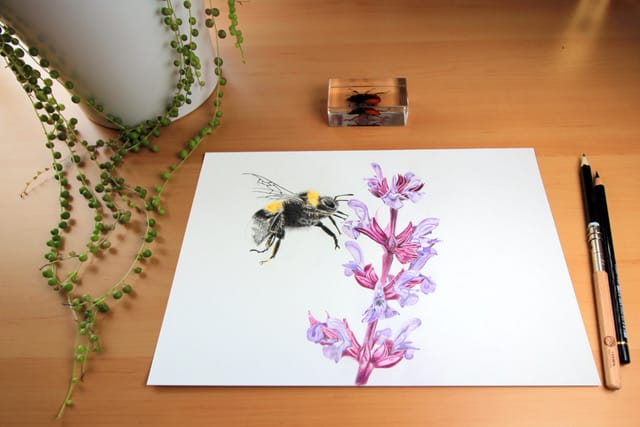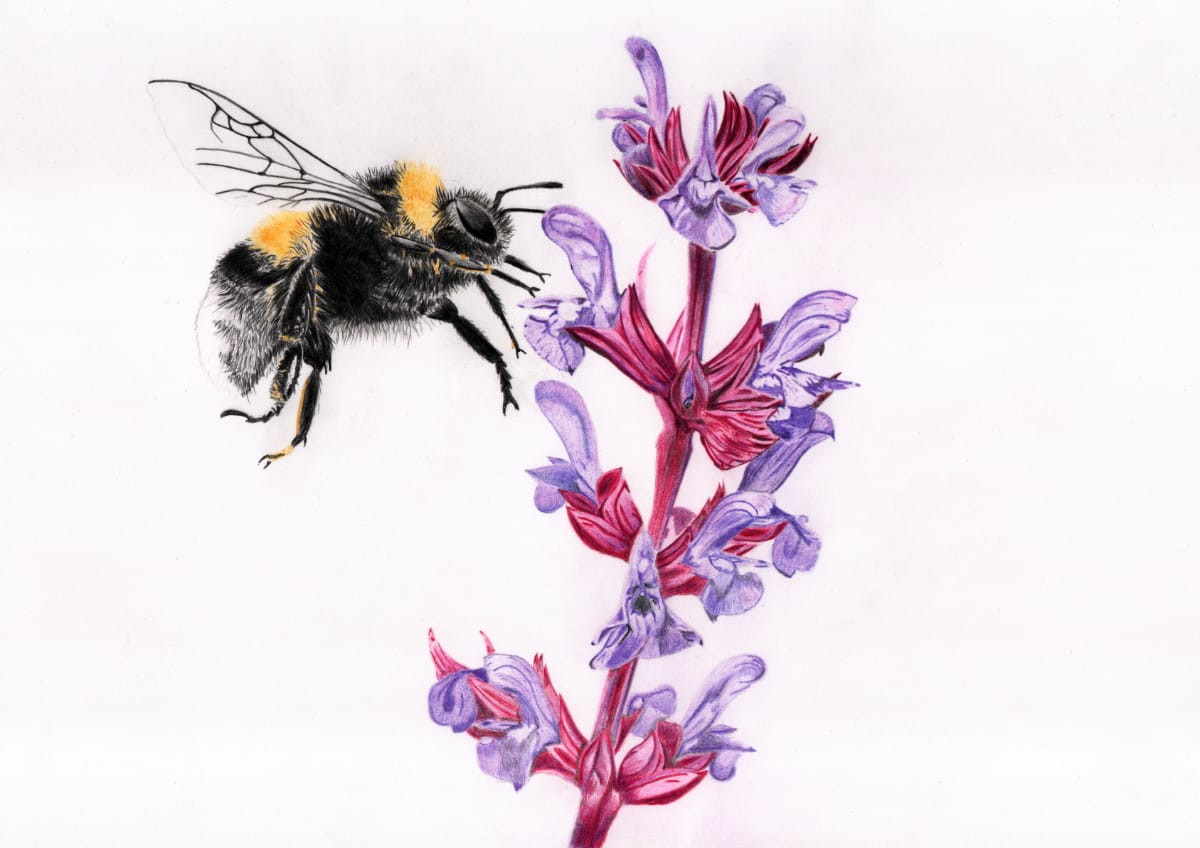White Tailed Bumblebee Bombus Lucorum
Details of Artwork: Created using Polychromos Faber-Castell colour pencils and Winsor & Newton A4 Bristol extra smooth 250g/m2 paper.
I live in the perfect area for white-tailed bumblebees, I love watching them visiting the salvias in my garden.
White-tailed Bumblebee Bombus Lucorum
The white-tailed bumblebee, Bombus Lucorum, is a common and widespread species found throughout Britian. Characterised by a black body, with two lemon-yellow bands, and a white tail. There are a several similar species such as the buff-tailed bumblebee and the garden bumblebee.
The white-tailed bumblebees exhibits a broad habitat preference, thriving in gardens, farmland, woodland edges, hedgerows and heathland. Its presence is often correlated with abundant floral resources.
- Length: up to 2cm
- When to See: March to November
- Conservation status: Common
About the white-tailed bumblebee
The white-tailed bumblebee is a social insect. Queens emerge from hibernation in spring, establishing colonies by laying a few eggs that hatch as workers, these tend to the young and the nest. Males emerge later in the season and mate with new females who are prospective queens.
As with other social insects, the queen emerges from hibernation in spring and starts the colony by laying a few eggs that hatch as workers; these workers tend the young and the nest. Males emerge later and mate with a new females who are prospective queens. Once mated the females gorge on nectar and pollen in the nest. Both the males and the old queen die in the autumn, but the new queens hibernate, often underground.
I'd also like to pop in a disclaimer here - I'm a keen amateur, and not a professional botanist, gardener or wildlife expert. Although I'll do my best to check everything, if you see any errors, let me know. I have a keen interest in the wildlife that visits my garden, which I love to learn about.
Copyright
The Bee original photo is licensed with Element Envato.
The plant is in my own garden, and the photo belongs to Christina Radisic.
If you are interested in using the picture above please contact Christina


